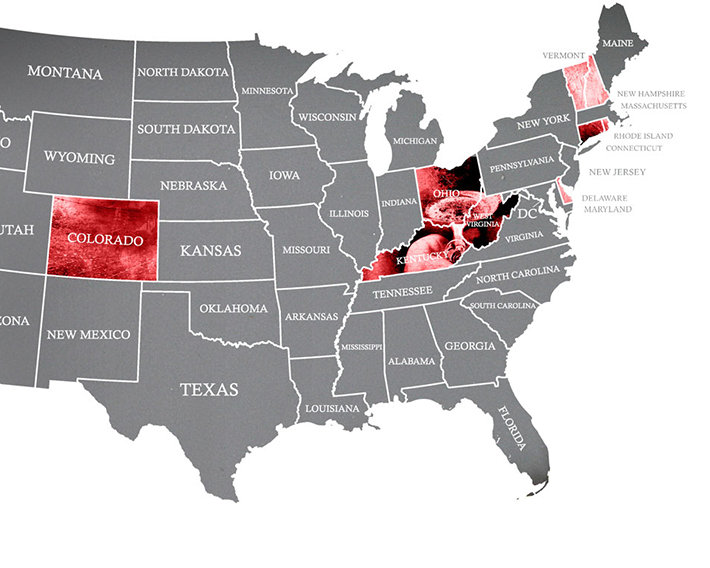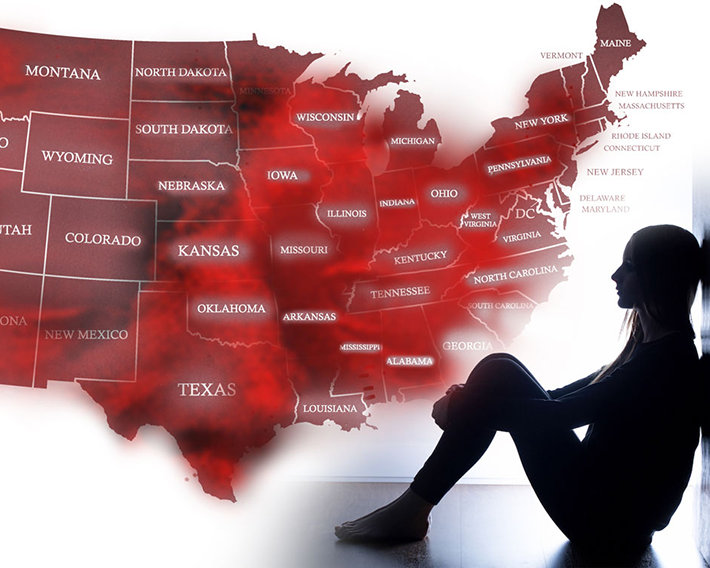How Your Tax Dollars Finance the Opioid Epidemic

The average American would be horrified to think of his hard-earned money, his tax dollars supporting anything as insidious and destructive as the current epidemic of opioid use and overdose. Well, be prepared to be just that horrified. Because that’s where some of your money is going.
This fact was revealed in a January 2018 Senate report titled Drugs for Dollars: How Medicaid Helps Fuel the Opioid Epidemic. This report outlines in great detail the way that Medicaid has been used and abused for the purpose of acquiring massive amounts of addictive drugs to distribute to anyone willing to pay the price. In this way, Medicaid has been facilitating the creation of more addicts. It’s a system run amok, with no one raising an alarm until now.
Of course, it’s your tax dollars that fund Medicaid, primarily federal tax dollars. Even more federal dollars were needed as of 2014, when Medicaid coverage was expanded to many more families under the Affordable Care Act. Federal money funded 100% of this expansion. Now, 74.5 million people are covered by Medicaid. That expansion extended not only Medicaid coverage but also the problems of addiction and overdose.
More than any other type of American, this report notes, the opioid epidemic has delivered a knockout punch to those on Medicaid. Why?

- Those receiving Medicaid assistance are 10 times more likely to suffer from addiction than the average American.
- A 2016 report found that Medicaid recipients are four to six times more likely to overdose from painkillers than those not on Medicaid.
These statistics indicate that this system is not only broken, it is taking lives and shredding the fabric of American life.
We’ll give you some details to clarify why and how this could happen.
Fraud, Forgeries, Conspiracies
While the Homeland Security and Governmental Affairs Committee of the Senate only executed a limited investigation, they had no trouble finding thousands of instances of illegal activities related to the prescribing, sales, distribution or use of opioids like oxycodone, hydrocodone and buprenorphine.
Again, why? According to this report, Medicaid has ended up “incentivizing” the abuse and sale of addictive medications. What that means is this system unwittingly provides free or nearly-free pain medication to people who are struggling just to feed their children or themselves every day. The temptation to acquire pills that were not needed and then sell them was too overwhelming to resist.
In this limited investigation, the committee found 298 cases of Medicaid-opioid fraud or other illegal activity. They found that 1,072 people had been convicted or charged since 2010 for using their Medicaid enrollment to obtain opioids improperly, some of which were sold on the street. Keep reading for some specific examples of this fraud.
The Nuts and Bolts of these Schemes
The way Medicaid is set up, those who receive prescriptions might pay $4 or $8 for a bottle of opioid painkillers, say, a combination of acetaminophen and hydrocodone, a favorite among the addicted. Those same pills might bring as much as $10,000 when sold on the street. Here’s some of the cases found by this investigation:

- In Connecticut, a drug dealer preyed on those receiving Medicaid who were short on funds. He paid them to visit doctors and give the pills to him. He was charged with illicit distribution of more than 6,000 pills valued at $185,000.
- The owner of skilled nursing facilities ran a $1 billion scheme to defraud both Medicaid and Medicare. He invited people who did not need his type of skilled nursing, for example, those already addicted to opioids, to stay in his facilities. Medicaid and Medicare were then billed for unnecessary treatments and more pills.
- In Indiana, a small-town Ob/Gyn who had delivered the town’s babies for decades wrote prescriptions for more than a million pills of addictive painkillers in a three-year period. Six of his patients fatally overdosed.
- A Bronx grocery store was the headquarters of a prescription drug ring. Medicaid recipients were directed to the store to turn over their pills which were then stockpiled and sold on the street. When the ring was busted, their delivery car contained thousands of bottles of pills.
Cases of similar fraud showed up in the food stamp program and the Veteran’s Administration, which had 60 investigations of opioid-diversion ongoing.
What Problems Did Medicaid Expansion Create?
The Senate report flatly states: “Growing evidence indicates that the Medicaid expansion, by providing prescription opioids to a wider pool of people, may be worsening the epidemic.”
Not all states were affected by this Medicaid expansion. Eighteen states chose to refrain from participation. In the states that chose to participate, overdose deaths have risen nearly twice as fast as in the other states.

The Centers for Disease Control reported that in 2015, the following five states had the highest rates of overdose deaths: West Virginia, New Hampshire, Kentucky, Ohio and Rhode Island. These are all Medicaid expansion states. The CDC stated: “Opioids—prescription and illicit—are the main driver of drug overdose deaths.”
Solving the Problem
Just as there is no single cause of the opioid epidemic, there is no single, simple solution to this situation.
- It requires rolling up our sleeves and prosecuting those who prey on others and who are willing to not just break but shatter our laws for their own profit.
- It continues with providing rehabilitation services that enable those caught in this trap to begin living productive, law-abiding, drug-free lives again.
- It should involve helping people resolve the reasons for their poverty through job counseling or education.
- It would definitely involve educating young people on the need to avoid the misuse of any prescription drug or the use of any illicit drug.
The problem will only be solved by all of us working together in our own specialized areas, with empathy in our hearts for those whose primary failing was becoming addicted.
Without a dedicated approach to righting this huge area of wrong, every American will continue to be penalized by paying money out of their own pockets to support this criminality.


 ®
®